Pelycosaurs
|
"Pleycosaur" is a paraphyletic grouping of the more primitive proto-mammals (synapsids). They generally have a more reptile-like features, including simple teeth, a sprawling posture and long tail.
Dimetrodon sp. is one of the besk known pelycosaurs and was a carnivore or possibly a fish-eater. The function of its sail is unknown, but may have been for thermoregulation or social/sexual display.
North America, Europe
Permian Period, 280-265 Ma
Museum of Ancient Life, Utah
|
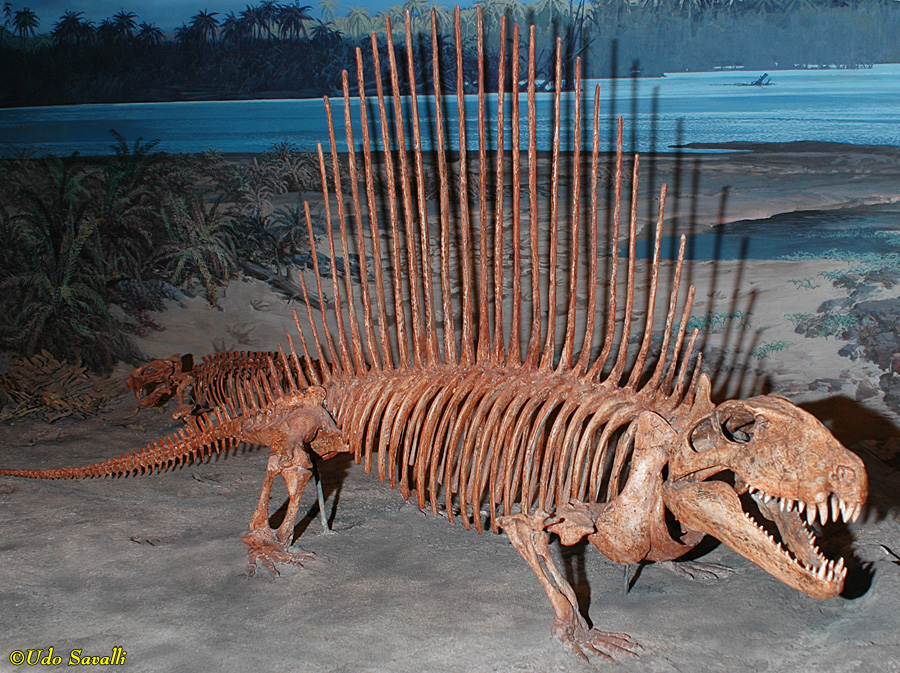
|
|
|
Dimetrodon limbatus with its contemporary, Eryops megacephalus.
Admiral Formation, Archer Co., TX
Early Permian Period, 275 Ma
Denver Museum of Science & Nature
|
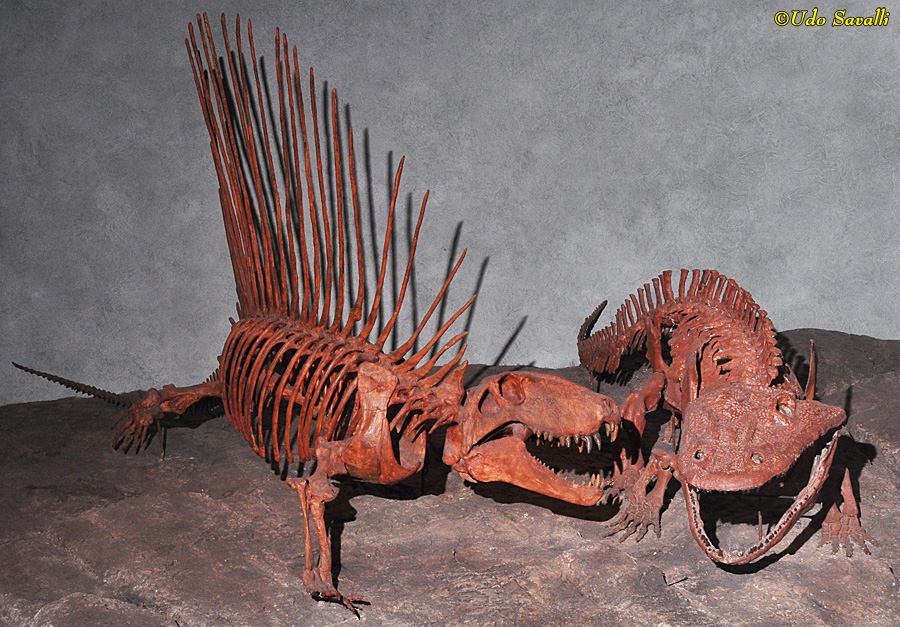
|
|
|
Cast of a juvenile Dimetrodon sp.
Southwest Texas
Early Permian Period
Arizona Museum of Natural History
|
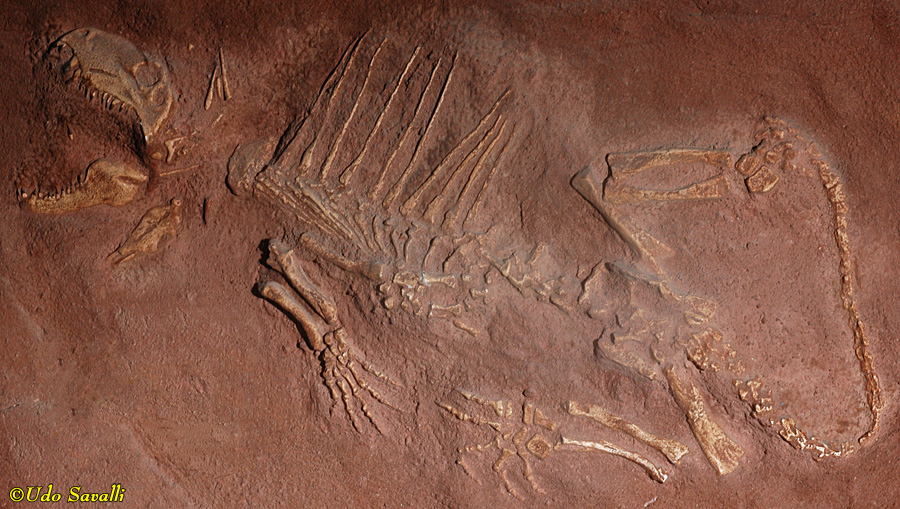
|
|
|
Ennatosaurus tecton was an herbivore (note the peg-like teeth). Cast of a partially crushed skull.
Pinega, Russia
Late Permian Period
Arizona Museum of Natural History
|
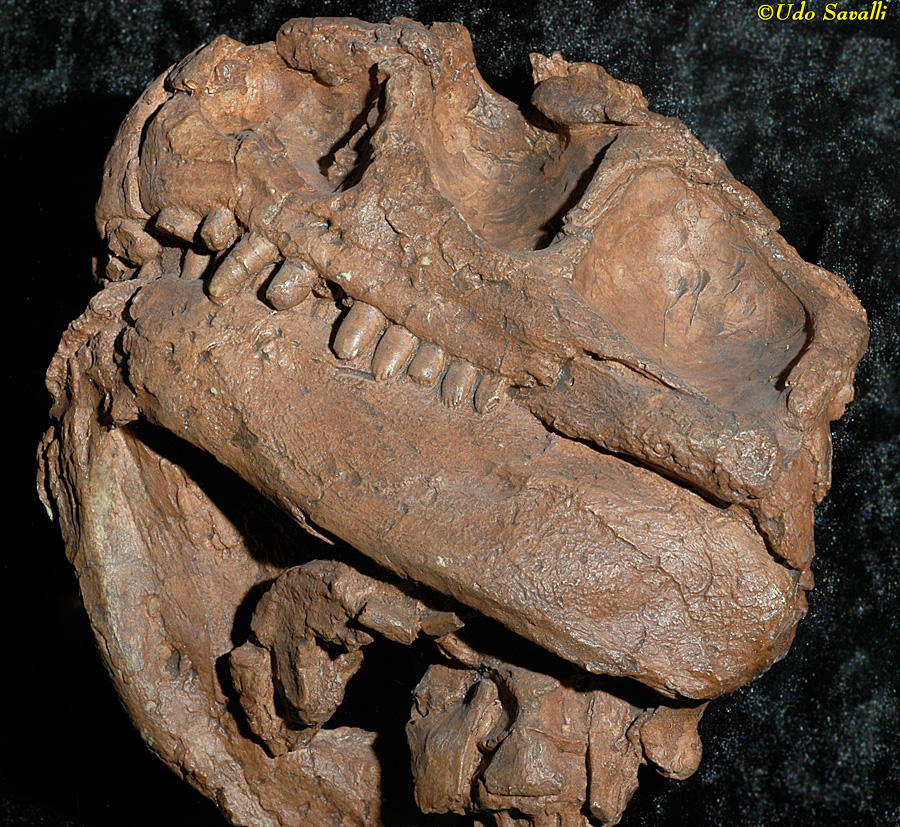
|
|
|
Although Edaphosaurus sp. superficially resembles Dimetrodon because they both have a sail, they are not especially closely related and evolved their sails independently. Edaphosaurus was an herbivore.
Texas
Permian Period
Black Hills Institute Museum, South Dakota
|
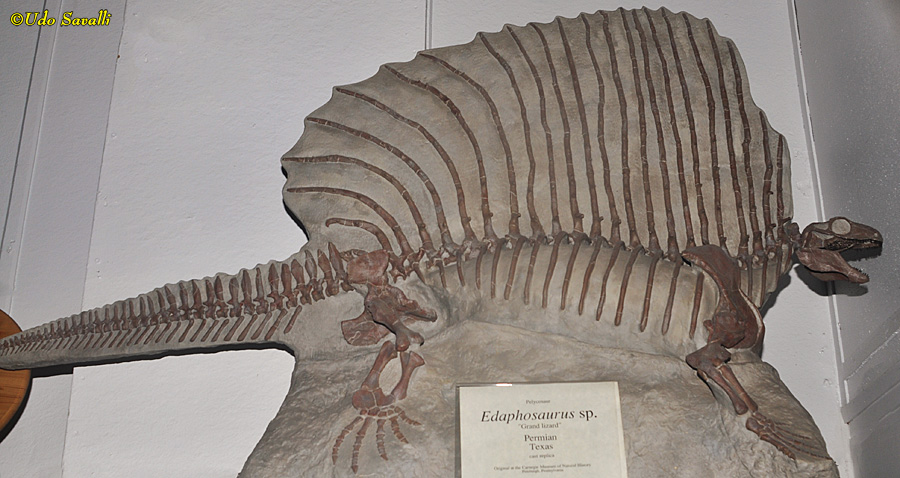
|
|
|
Life model of Ianthasaurus sp., a close relative of Edaphosaurus.
Carboniferous Period, late Pennsylvanian Epoch, 295 Ma; Kansas
Denver Museum of Science & Nature
|
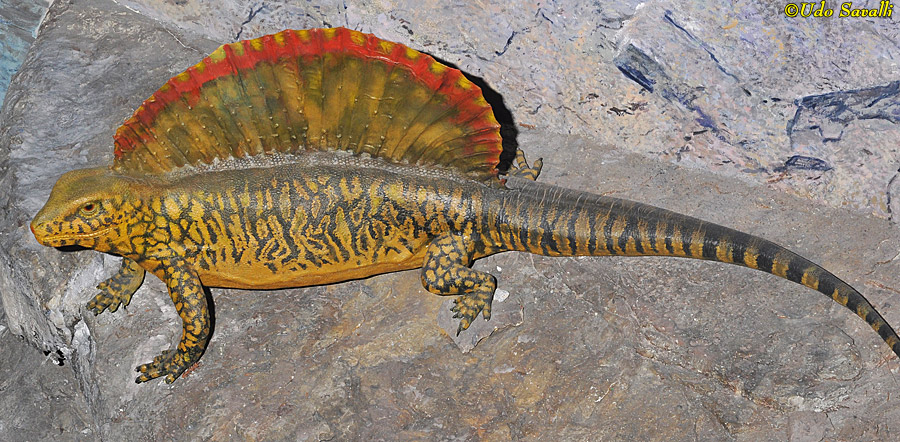
|
|
Therapsids
|
Therapsids are intermediate in the transition from the more reptile-like pelycosaurs to the mammals. Compared to the pelycosaurs, they generally have a more upright posture, shorter tail, and more varied teeth.
Placerias hesternus (skeleton cast) was a cow-sized herbivore that is a member of the Dicynodontia clade.
Chinle Group, Blue Water Creek Formation, Arizona
Late Triassic Period, 220 Ma
Petrified Forest National Park
|
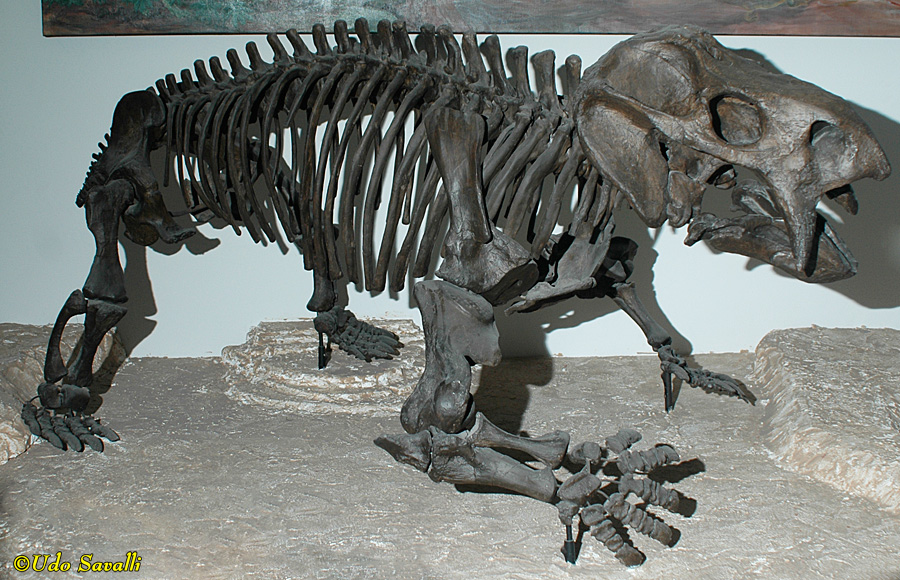
|
|
|
Life model of Placerias sp.
Late Triassic Period; Arizona
Arizona Museum of Natural History
|
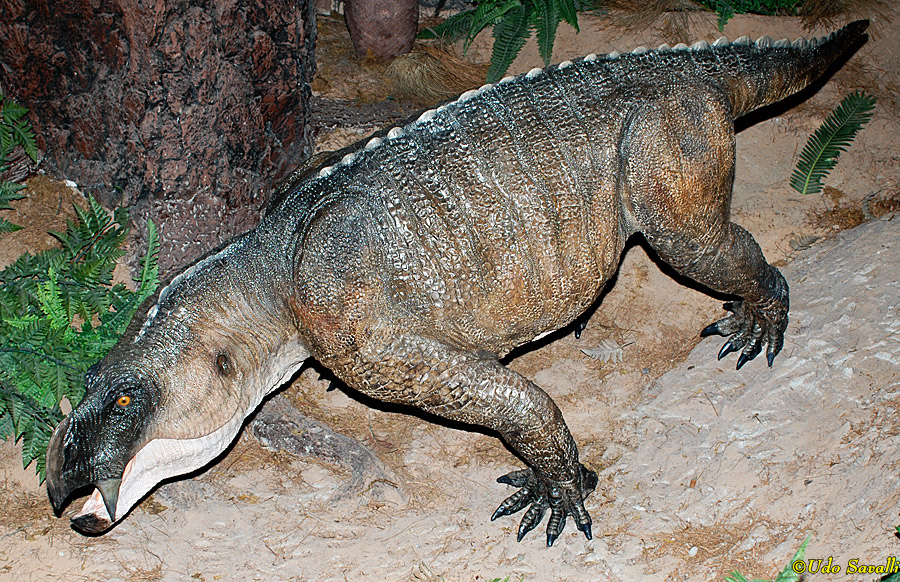
|
|
|
Dicynodon sp. cast skeleton. It was an herbivore that was toothless except for the two tusks, which may have been used to dig up roots
Permian Period, 280-265 Ma
Museum of Ancient Life, Utah
|
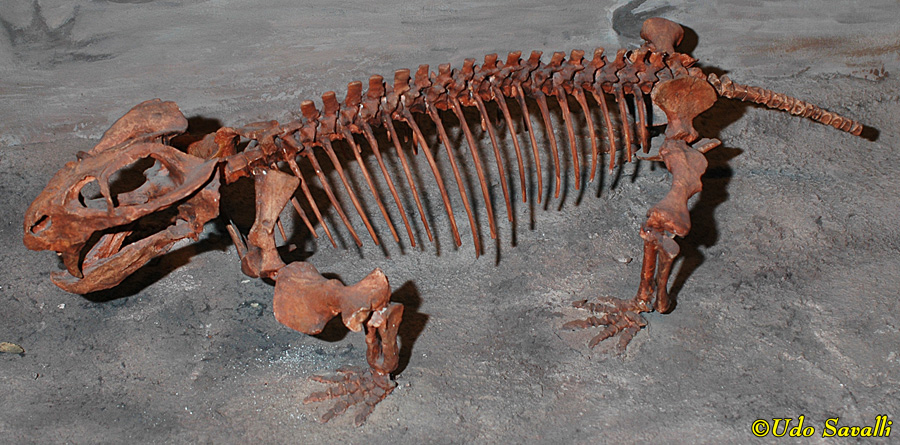
|
|
|
Lystrosaurus sp. is one of the most common dicynodontids. They survived the end-Permian mass extinction and briefly flourished in its aftermath.
Early Triassic Period, 250 Ma
Wyoming Dinosaur Center
|
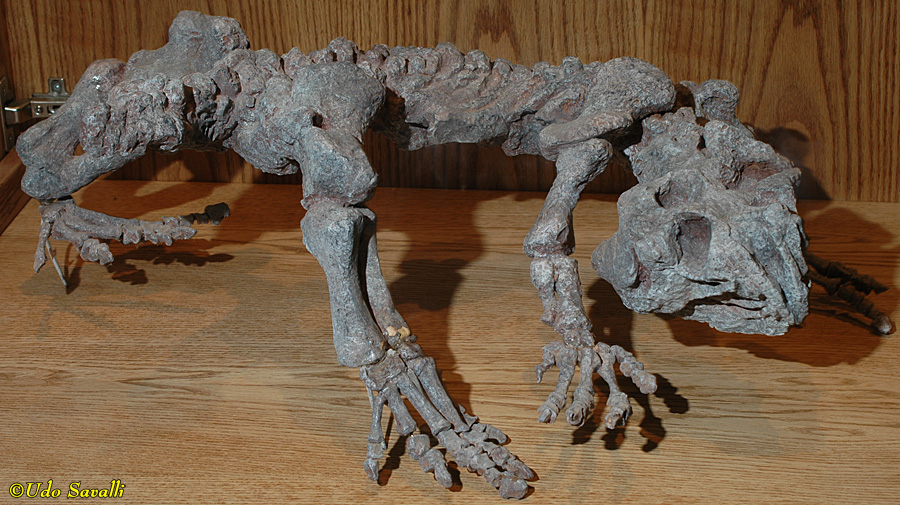
|
|
|
Aulacephalodon sp., a dicynodontid. Skull cast.
Karoo Group, South Africa
Permian Period, 252 Ma
Denver Museum of Science & Nature
|
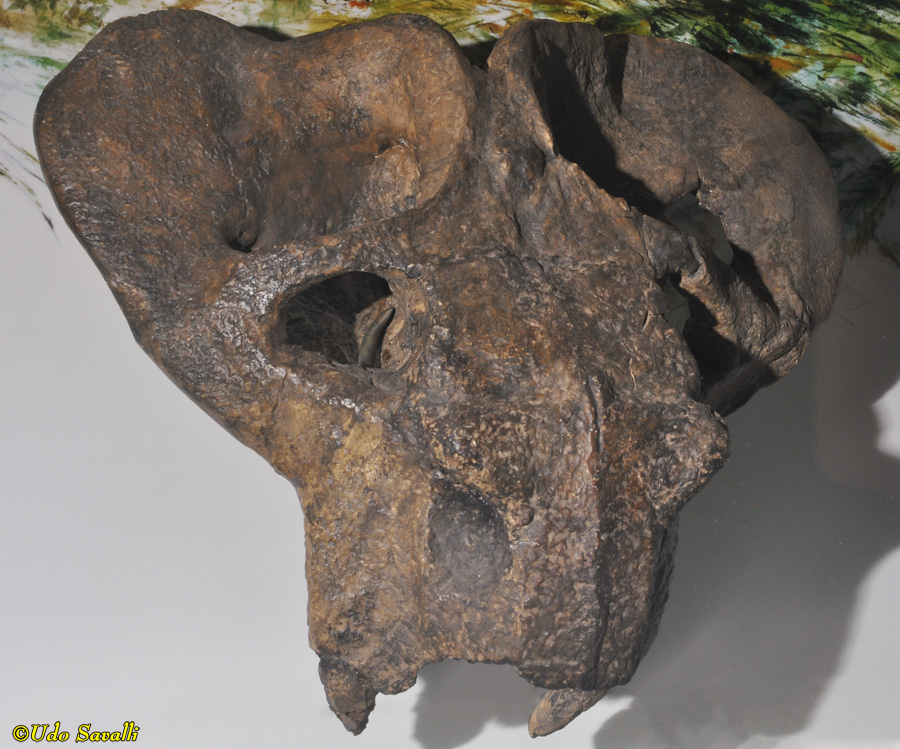
|
|
|
Diictodon sp. skull was, like all dicynodonts, an herbivore.
South Africa
Late Permian Period, 260 Ma
Wyoming Dinosaur Center
|
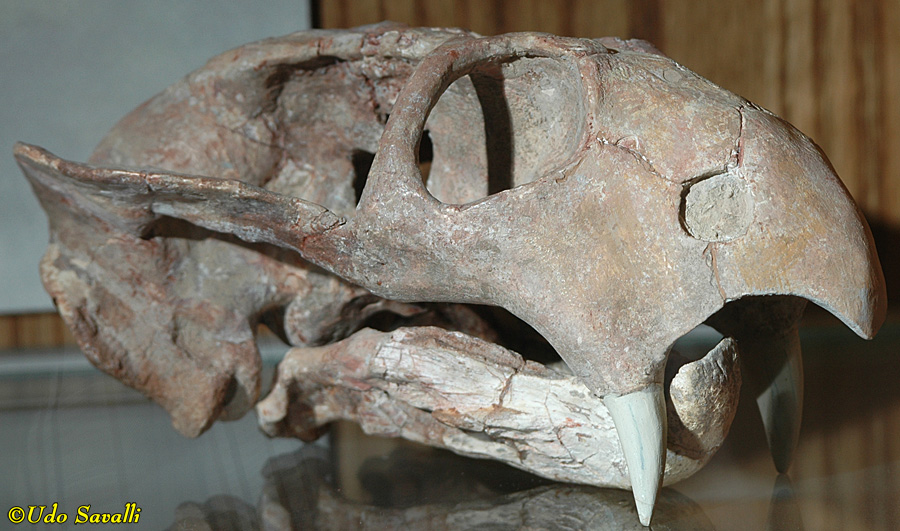
|
|
|
Estemmenosuchus mirabilis is a member of the clade Dinocephalia. It was likely an herbivore. The horns were larger and more developed in males.
Ocher, Russia
Late Permian Period
Arizona Museum of Natural History
|
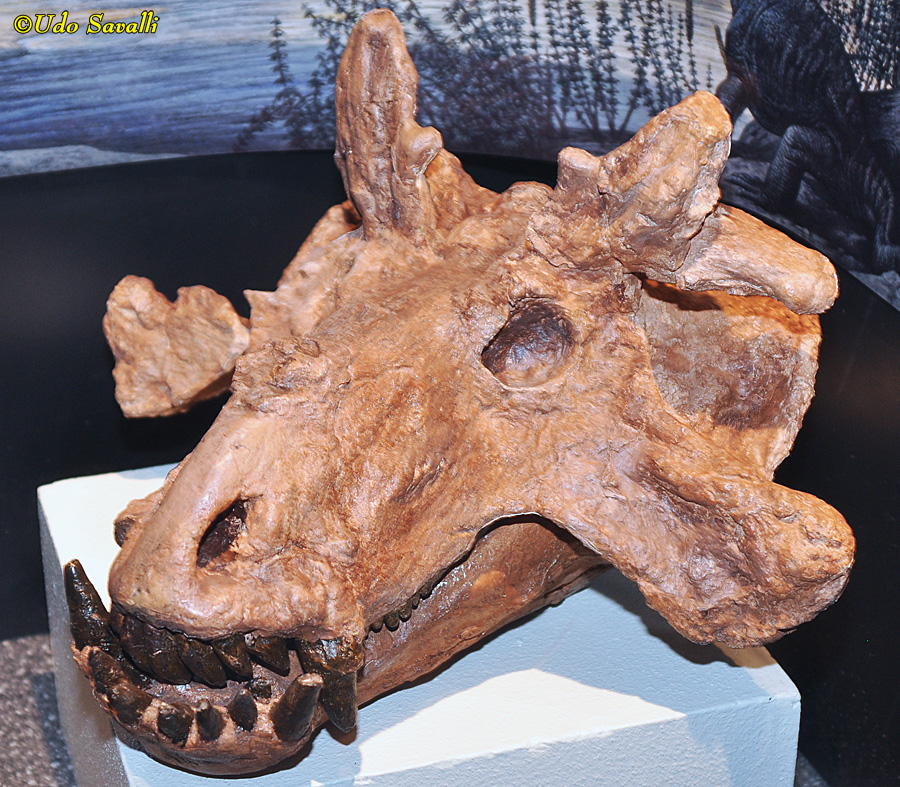
|
|
|
Biarmosuchus tener is a member of the basal therapsid clade Biarmosuchia; it was likely carnivorous.
Ocher, Russia
Late Permian Period
Arizona Museum of Natural History
|
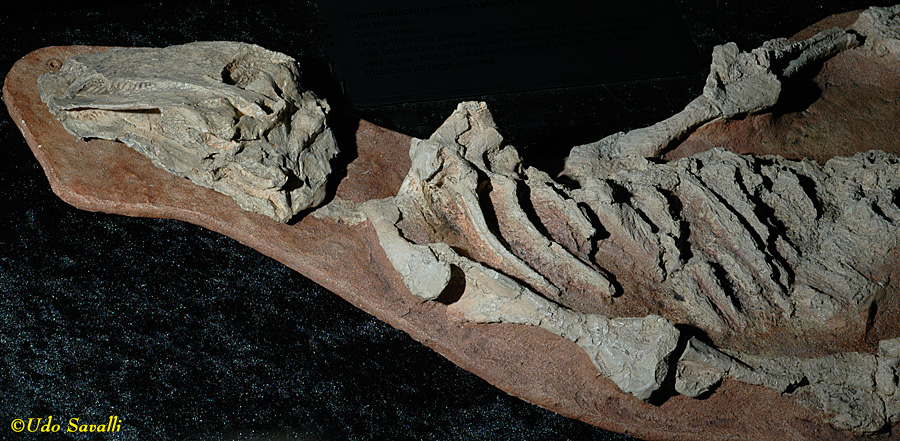
|
|
|
Eotitanosuchus olsoni skull cast (Biarmosuchia).
Ocher, Russia
Late Permian Period
Arizona Museum of Natural History
|
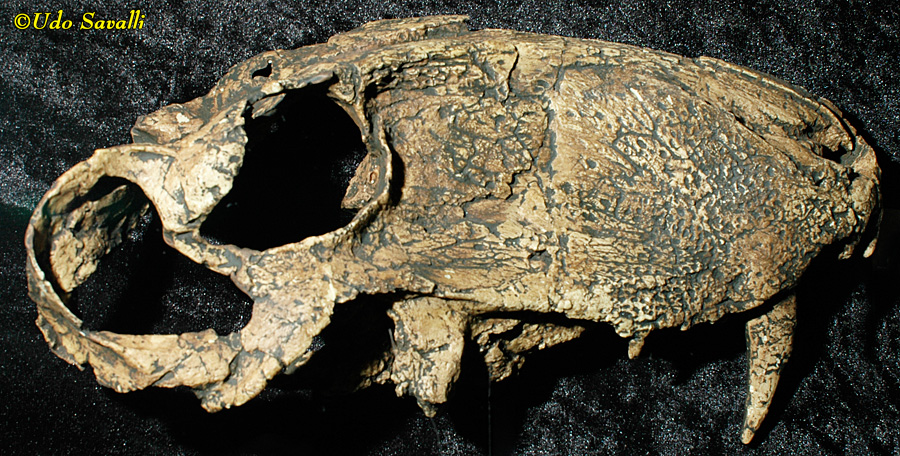
|
|
|
Inostrancevia alexandri is a fairly typical member of the Theriodontia (excluding the cynodonts and mammals). Many of these were fairly large carnivores with varied teeth. They are more closely related to mammals than to the therapsids shown above..
Sokolki, Russia
late Permian Period
Arizona Museum of Natural History
|
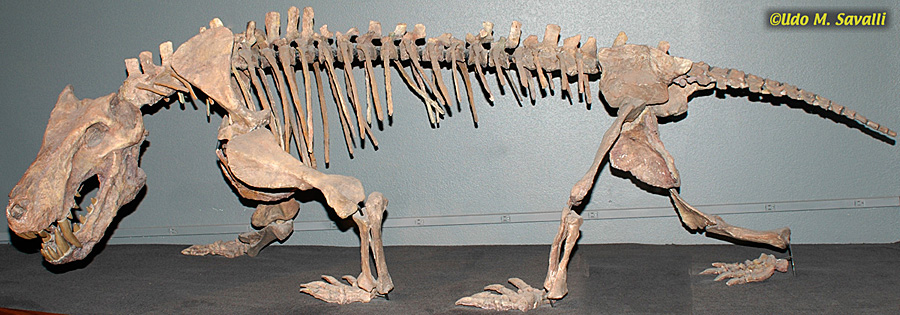
|
|
|
Skull of Lycosuchus vanderrieti, another theriodontian. Note the three different types of teeth, a characteristic shared with mammals.
Abrahamskraal Formation, southern Africa
late Permian Period, 265-245 Ma
Museum of Ancient Life, Utah
|
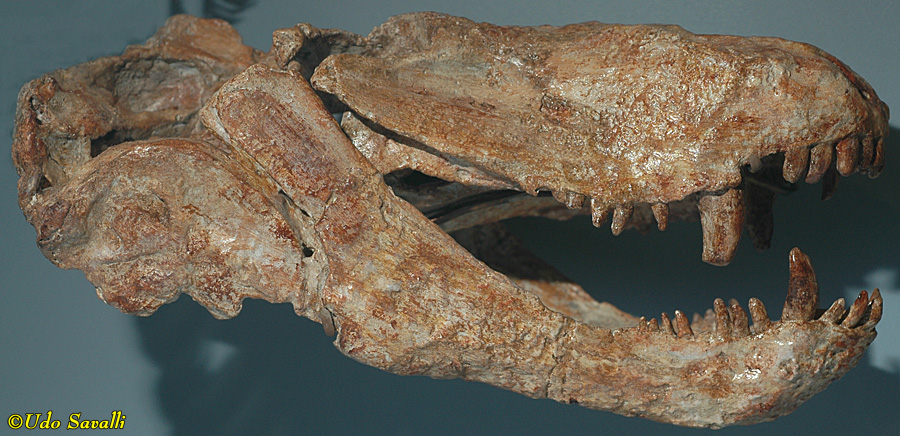
|
|
Cynodonts
|
The cynodonts are the most mammal-like of the non-mammalian therapsids, and represent transitional forms in the evolution towards true mammals. While we have no direct evidence, it is likely they had hair and some may have suckled their young.
Cast of a Kayentatherium sp. skull.
Kayenta Formation, Arizona
Early Jurassic Period, 195 Ma
Dinosaur Discovery Site at Johnson Farm, Utah
|
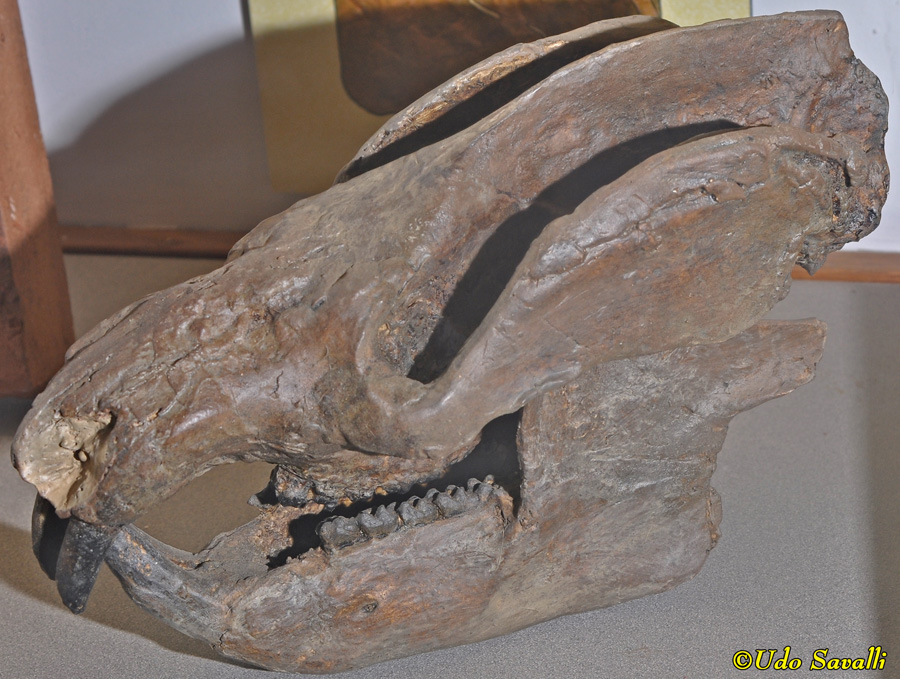
|
|
|
Adelobasileus cromptoni, known only from this tiny 17mm long skull, was transitional between the rest of the cynodonts and the very first mammals. It was either the common ancestor to all mammals or closely related to the common ancestor.
Texas
Late Triassic Period, 225 Ma
New Mexico Museum of Natural History & Science
|
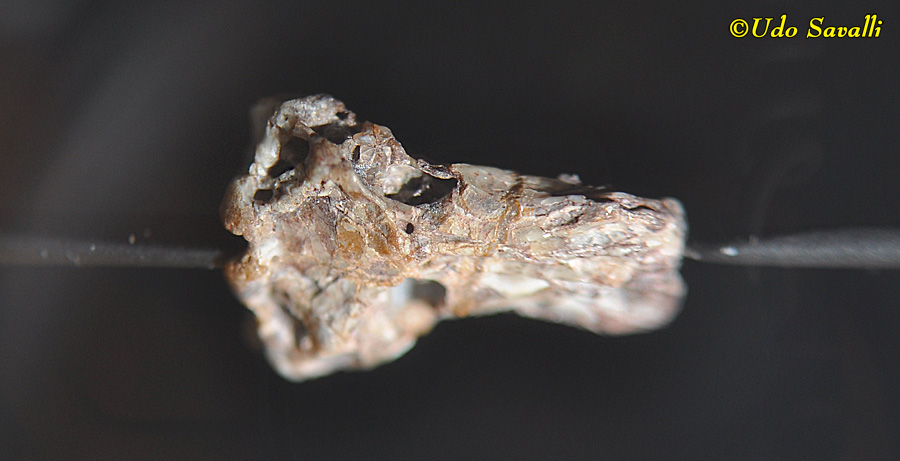
|
|
|


















